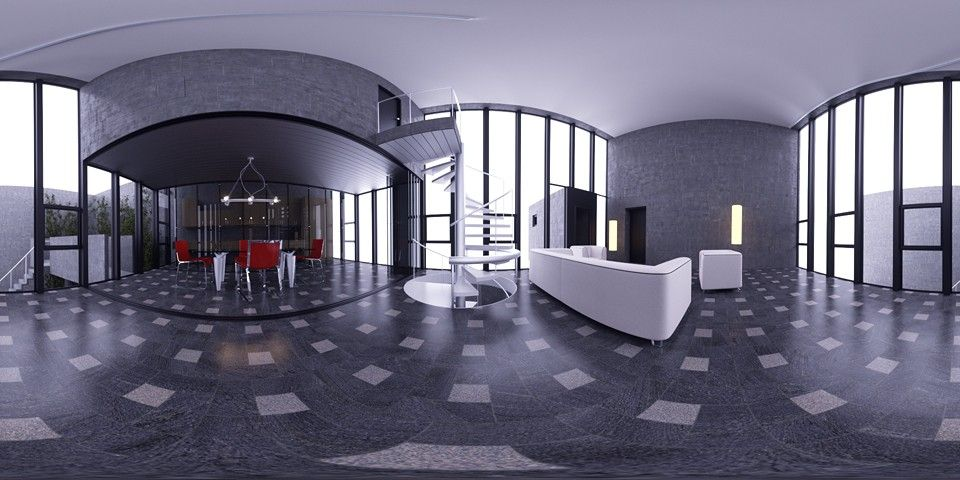Maxwell Render provides you with 8 different lens types useful for a range of different scenarios. For example the spherical lens can be used to create environment maps for use in Environment lighting, or to create 360 degree virtual tours.
...
Selection to "convert" the circular fish eye render into a "full frame" fisheye. In this case a FOV setting of 180 was used
| Noteinfo |
|---|
For the fisheye lens to work properly, you must enter a square resolution for your camera, ie. 500x500, 2500x2500 etc. |
...
This lens creates a 360 degree render of your scene, using an equirectangular projection. This type of projection is commonly used for HDR captures of a real-world environment, which are used for Image Based Lighting. So, you can use the spherical lens to create an HDR environment of your scene, or to create virtual 360 tours. There are applications that can import an equirectangular image, and construct an interactive web page from that image (ex. Player, 3D Vista).
| Noteinfo |
|---|
Because an image using equirectangular projection is always twice as wide as it is tall, you must make sure to enter this ratio in your camera output resolution for the spherical lens to work properly. For example: 1000x500, 2500x1250 etc. |
360º view of an interior, rendered using an Spherical Lens. This projection is usable as an environment for other interior renders. Notice the 2:1 aspect ratio
Cylindrical lens
This lens creates a 360-degree render of your scene, using a cylindrical projection, instead of a spherical one. You can choose the angle of view that should be represented in the cylindrical projection.
...
Cylindrical lens with a setting of 180 for the Angle.
| Noteinfo |
|---|
For best results, you should generally use a render ratio of at least 2:1 (twice the width compared to the height) |
...
